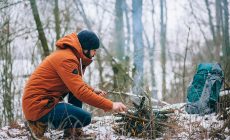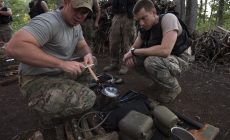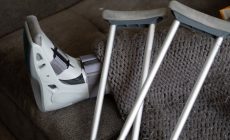Clothing Repair
Maintaining your gear and clothing in a survival situation is one of the most essential skills you need to learn to increase your chances of survival. You can expand your skills in maintaining your clothing and gear if you have the right interest and motivation. You could even go beyond that and learn how to make your own gear even without sewing machines which would probably be better than most of what you can buy. Having the right skills will give you the ability to make useful gear like canvas bags, rifle slings and cases, bottle holders, archery quivers, hats, and buckskin moccasins to help you and your family to survive.
When building your survival kit adding a sewing kit would be the last thing on your survival gear check list, some might even overlook it because they focus on the immediate things they would need to survive. Keep in mind that whether you’re in a short-term or long-term survival situation your clothes and gears need to stay in good condition, so learning the skill of sewing is really necessary for a comfortable existence. Here is a list of what you need to include in a minimum survival sewing kit that is cheap to put together, requires very little space in your bag, and weighs almost nothing but very useful and effective:
Needles of Different Sizes and Styles
Keep in mind that every needle is suitable for different purposes so you need to store a package of different sized ball-points like these and sharp needles like these ones. Ball-points are used for stretchy fabrics like knits while sharp needles are used for sewing cloth that doesn’t stretch like fabrics. Leather needles or Glover’s needles are also very important as they will make sewing your leather shoes and gear easier because of their special triangle-shaped points. It’s also best to store a few suture needles as you may need to perform medical stitching. Tapestry needles, large eye harness needles, curved and sail needles will also be useful for all kinds of projects.
Different Sizes and Types of Thread
Do not store wimpy threads in your survival sewing kit, it is best to store hand quilting or large spools of mercerized cotton thread such as these as they are stronger and suitable sewing your survival cloths and gears. For more heavy-duty leather or canvass items and equipment store some waxed linen thread like these as they are thicker and stronger than cotton threads. Silk threads are best for medical sewing purposes or suture sewing so don’t forget to add them in your sewing supplies as well.
Sharpening Stone
Keeping your needles in good condition is really important in a survival situation since it will be very difficult to find alternative needles. Needles that are not in good condition will only damage your cloth or gears and could even cause injury. A survival sharpening stone like this one is very useful for keeping your needles in good and safe working condition.
Scissors
Storing scissors in your emergency sewing kit is really important as it makes cutting fabric and leather easier compared to using a knife which could even damage the cloth or gear you are trying to sew or fix. Aside from sewing you can also use scissors like this one for multiple purposes in a survival situation so having one on your survival kits would be really helpful.
Awls
Awls are really useful in making holes without cutting the fibers. This is suitable in sewing leather and repairing broken grommets.
Small Containers of Beeswax and Pine pitch
Using beeswax can make your seams last longer by running your sewing thread through it a few times before sewing. The wax makes the thread less vulnerable to light damage and abrasions making your cloth or fabric stronger. Using beeswax will also make your fabric more water resistant by spreading out and filling the sewing holes.
Pine pitch on the other hand is very useful for sealing a patch on shoes or any cloth or fiber where repair doesn’t require bending. Pine pitch will crack in cold weather if you bend it but it very flexible when warm. You can also make leather water-bearing bags using pine pitch as seals.
Straight Pins and Spring Clamps
Pins are used in holding your cloth or fabric together while stitching protecting it from accidental cuts and damages. For thicker seams, leathers, or canvass use clamps to hold them together when stitching.
Pieces of Cloth
Keeping a few rolls of pieces of canvass and linen in your emergency kit is very useful not only as patch materials but you can also use them as a water strainer for purifying purposes as well as bandages if necessary.
Small Container of Strong Shoe Glue
Shoes and boots are the most important equipment you need in a survival situation. Your mobility and survival will be greatly affected without proper footwear. Keep in mind that you boots and shoes will eventually wear out especially in a survival situation. Keep a barge cement like this one in your sewing kit as it is very effective in holding shoes and boots together without stitching or nails. It is also very useful for all kinds of repair.
Checkout this video of a survival sewing kit for more information:






















Leave a Reply
Your email address will not be published. Required fields are marked (required)